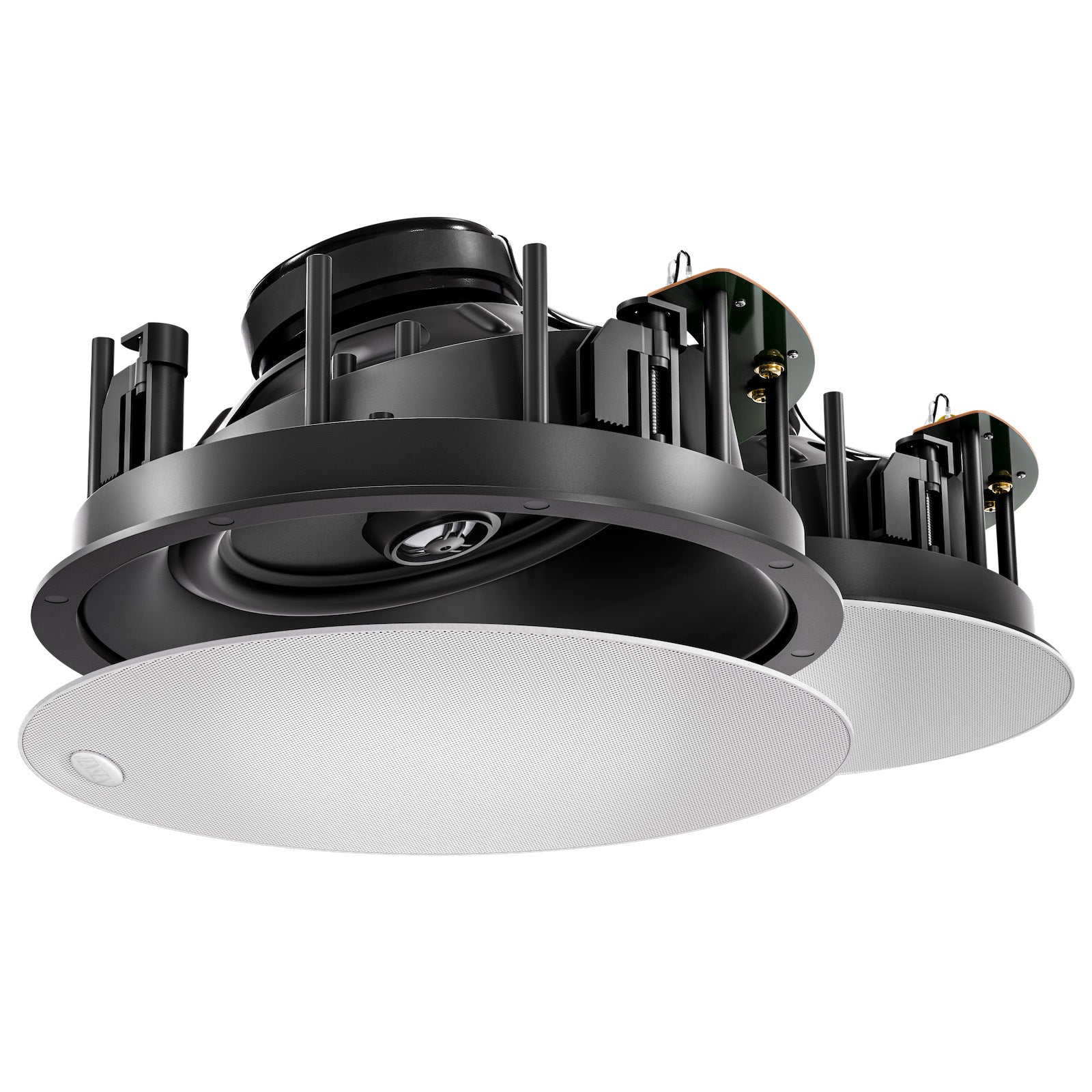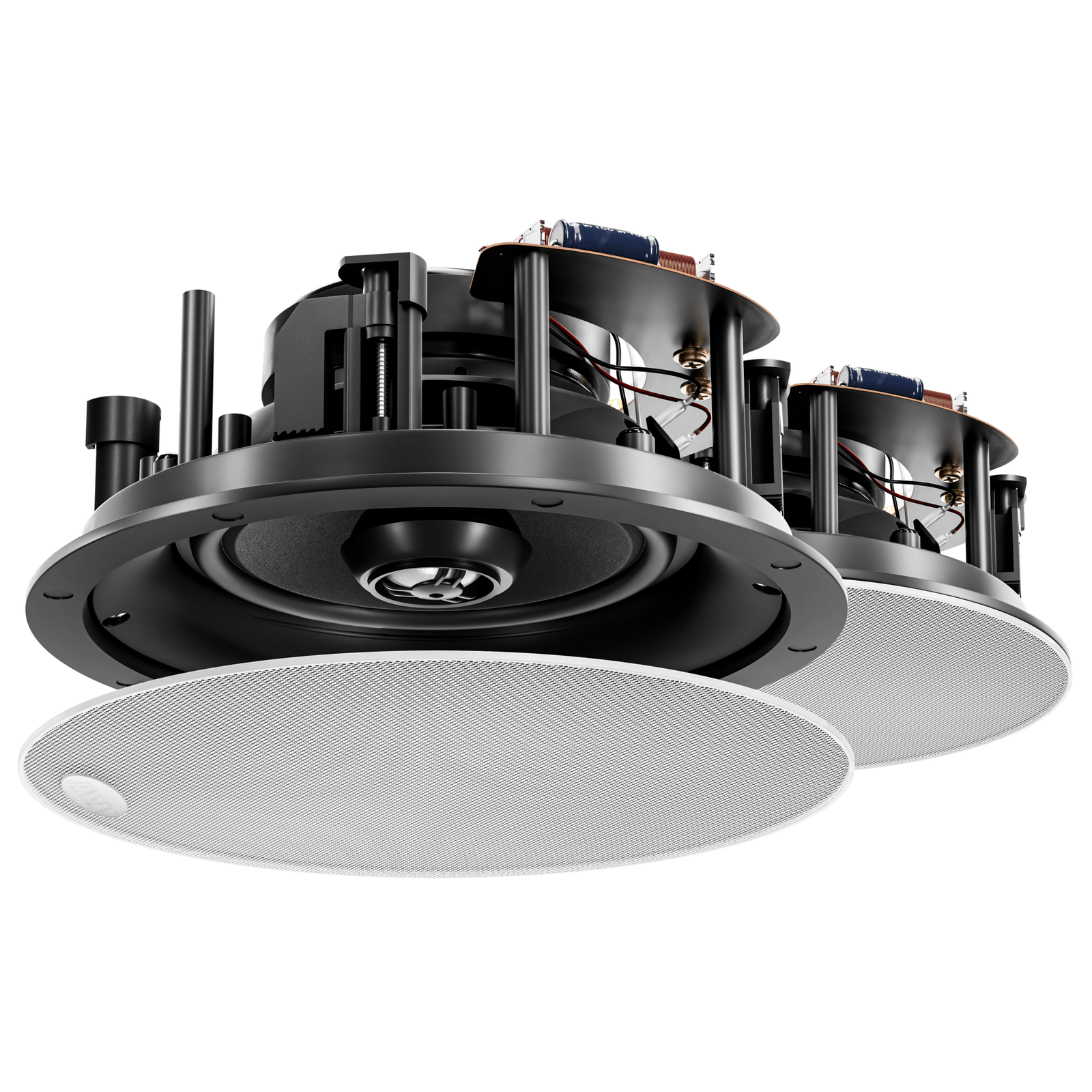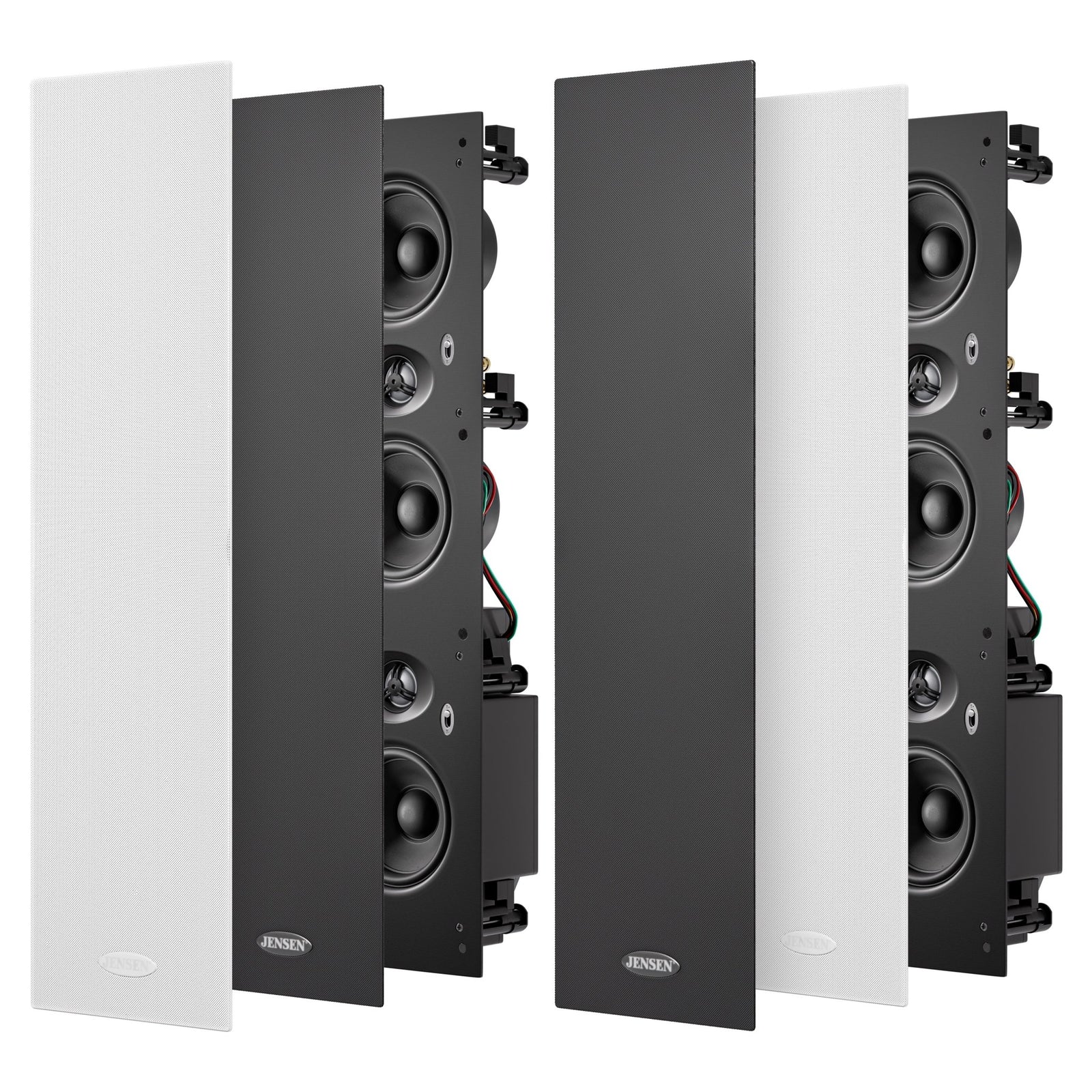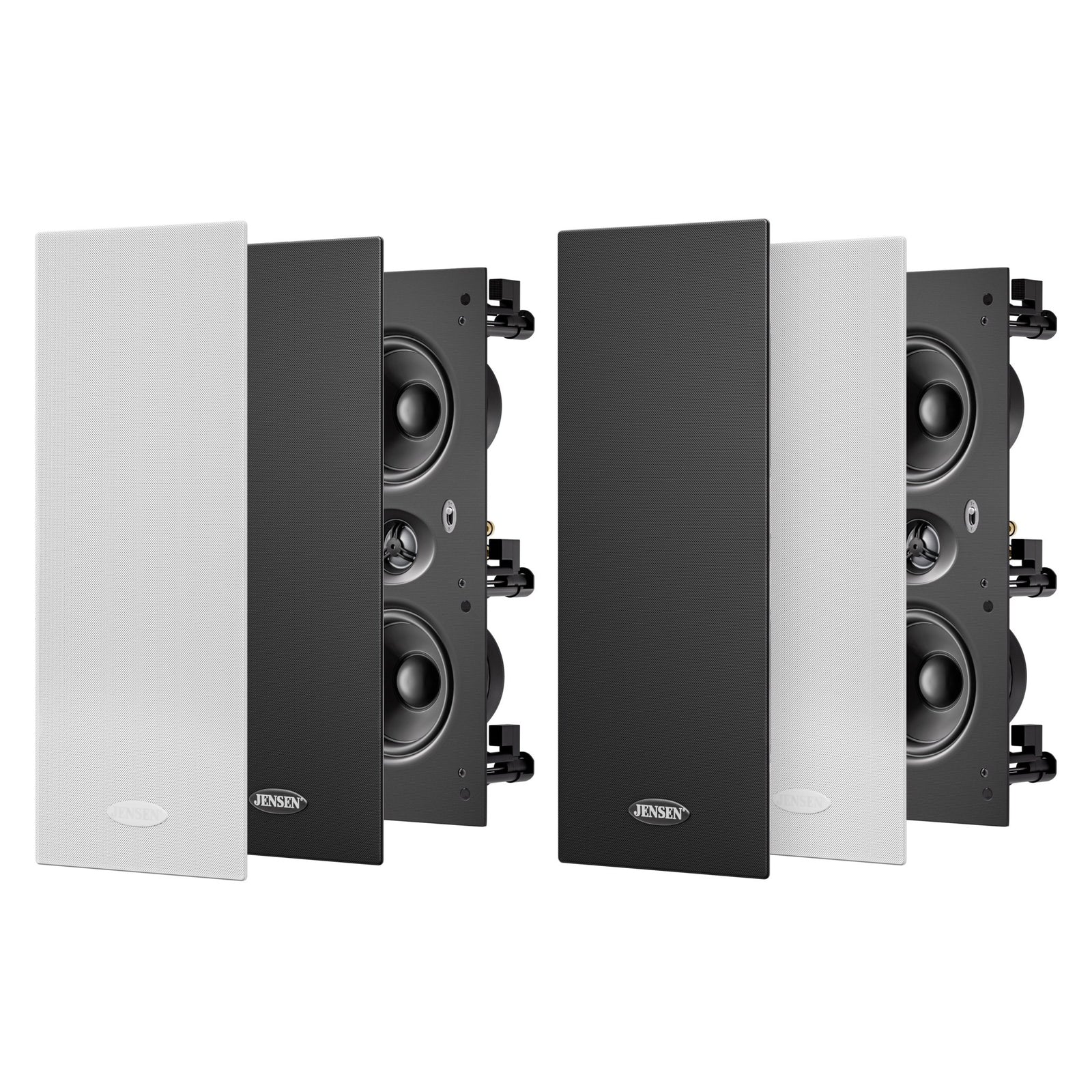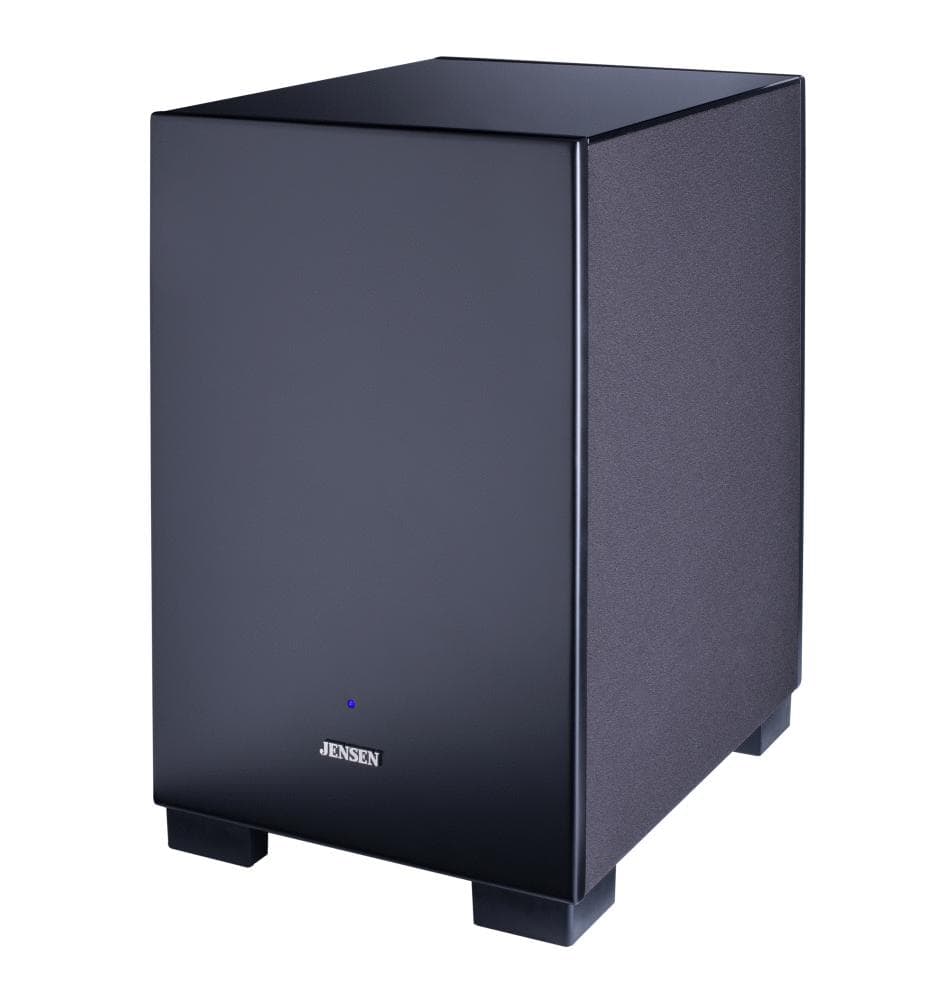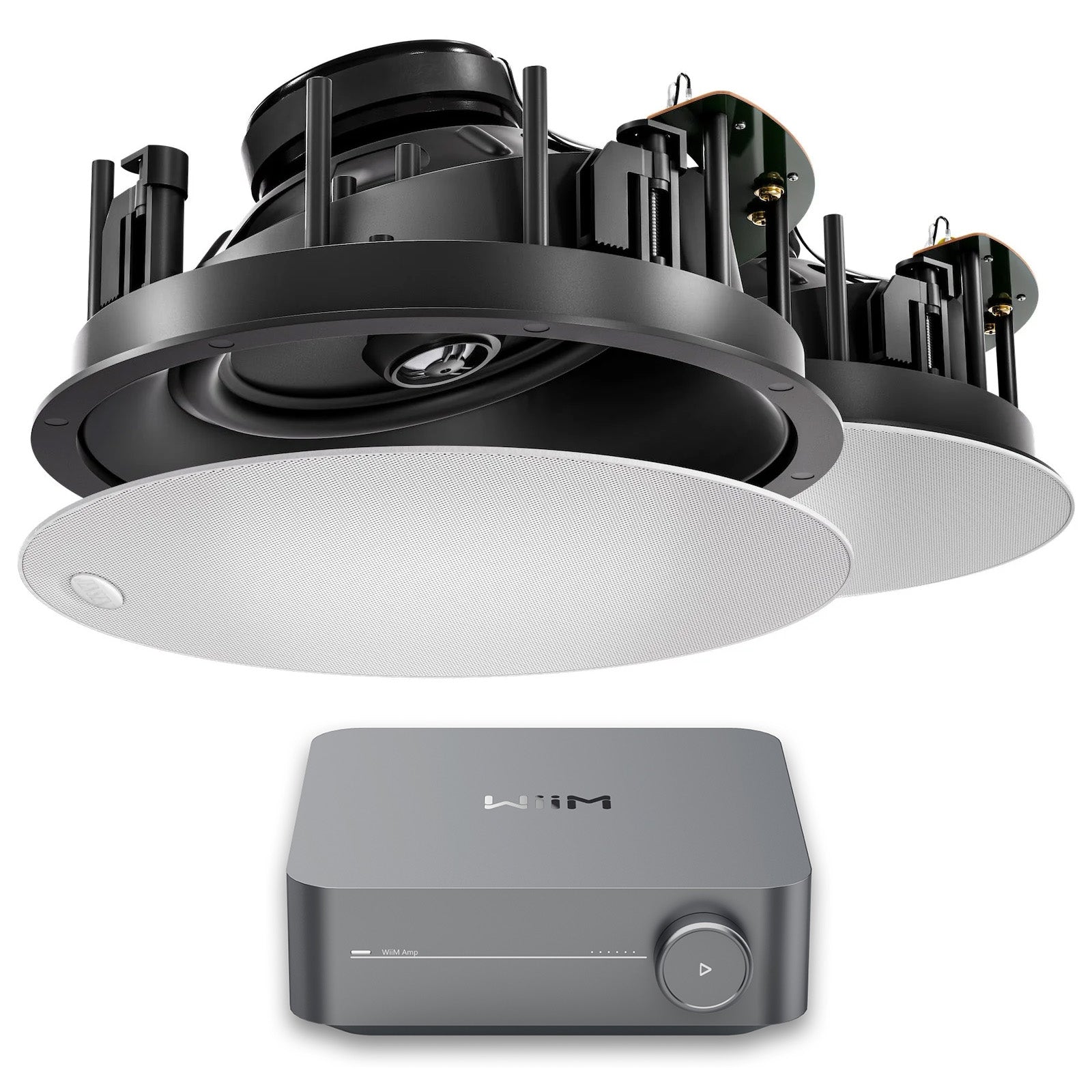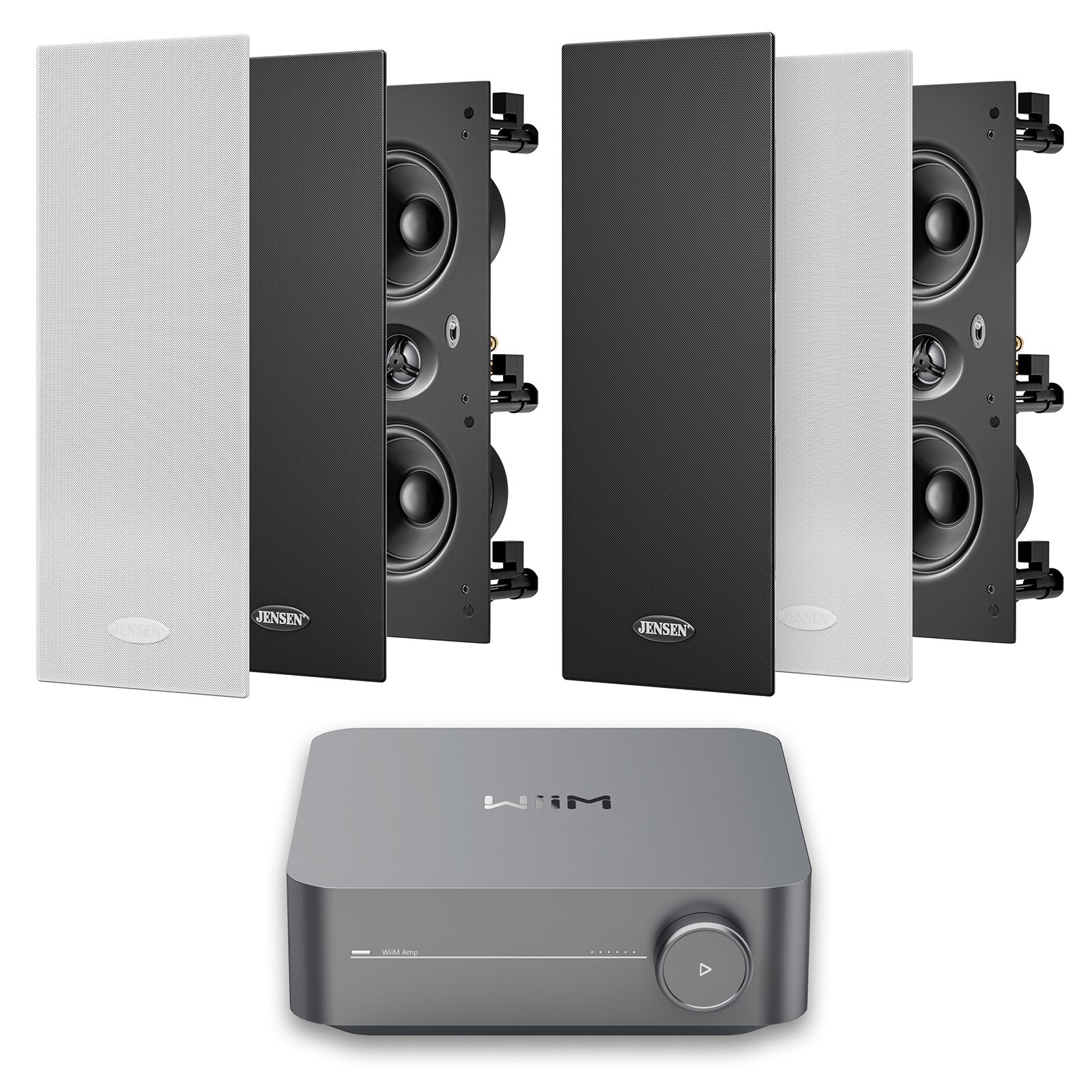The Best Audio System for your New Home!

Are you moving into a new home? Or building one?
Are you wondering what kind of audio system to get for it?
Well there are many options. But there's one option that stands out among all others.
- It uses a modern AV receiver in the most practical way.
- It gives you wireless audio and multi room sound from one box.
- It gives you a speaker system that looks and sounds great.
Read on to learn the most practical and common home audio setup and how to plan and buy your own.
Contents
- What is the best audio system for home?
- Why is the “5.1 plus zone 2” system a good choice?
- How do I plan and build a “5.1 plus zone 2” system?
- What speakers should I use in my alfresco area?
What is the best audio system for home?

Okay! So, the most practical and common home audio setup is the "5.1 plus zone 2" system using in-wall or in-ceiling speakers.
This system consists of a main room for movies and music, and a second room with two speakers for music only. And all the speakers are in-wall or in-ceiling which means no boxes or cables in the rooms at all.
For most people the main room is the lounge room.
It could be an open plan with a kitchen or a dedicated room. Either way, the main system will provide enough performance for a very large room.
Imagine a space where you can come home from a long day, give your phone a tap and have smooth tunes playing. Or the game on. Or a TV you want to get caught up on. There to listen to while you whip up a coldie and get ready to kick your feet up.
The main room is your theatre lounge.
It's the place you entertain. It's where you can relax. And using in-wall or in-ceiling speakers will compliment your home design.
Then there's the second room of this common setup option.
Most people use a patio (or alfresco) area for their two speaker zone. But you could also use a separate rumpus room, a kitchen, or the master bedroom.
Regardless of which room you decide to use… this part of the system is your listening only area.
Usually it serves for background music.
Often times you'll sit with friends taking turns putting on your favorite tunes. (Which is easy-as since your system will be wireless.)
People will even send audio from a cricket game or a news broadcast out to the alfresco while they lounge.
Why is the “5.1 plus zone 2” system a good choice?
The reason the 5.1 plus zone 2 system is so good is because of how modern AV receivers are set up.
Your AV receiver is your amplifier. It's also your "device hub." Which means it's where all your devices and speakers connect.
Let's go over the good stuff about today's receivers:
1. All the quality brand ones have Bluetooth and WiFi on board.
This means you can control everything from your phone.
It also means your receiver becomes your music source. It can connect to your network and stream music as is.
Combine that with the fact that most TVs today are "smart" and can stream movies and shows...
And you've got a powerful AND minimalist system on your hands.
2. All but the lowest budget models have "7.1" capability -- which mean 7 separate amplifiers inside.
This is the key to the "second zone." Because here's the truth:
7.1 may be impressive but 5.1 has at least 70% of the audio performance. 5.1 is impressive too. So often times it's a better use of those two extra amplifiers (inside the receiver) to power a second zone.
AV receivers now give you lots of settings to choose from. You choose "zone 2" from within them.
(I'll get into what 5.1 and 7.1 look like in a sec.)
3. All have tons more power handling than stereo amplifiers of similar cost.
This is a simple benefit that helps make the 5.1 plus zone 2 system work.
Since you're going to run a full surround in the main room plus a set of speakers somewhere else...
You often need long runs of speaker cable.
30 watt to 50 watt amplifiers aren't good for long runs.
Meanwhile even lower level AV receivers tend to be 90 watts and up.
The other good thing about this power is that you can get superb sound quality at higher volumes.
So when you host that weekend get together and wanna CRANK ER UP... your receiver's got your back.
How do I plan and build a “5.1 plus zone 2” system?

To plan your own 5.1 plus zone 2 system there's few things to consider.
Where you want your main theatre lounge to be should be obvious. It'll be the main lounge of the house OR an obvious entertaining room.
This is most likely where you'll keep the AV receiver. It could go in a cabinet or entertainment unit.
In rare cases, people want to use a utility room for their receiver. This is not recommended — you need to use the traditional remote to change on-screen settings. And those remotes use infrared which means you must point them at the receiver.
Once you have your main room chosen... here are the other considerations:
Which type of speakers should you use?
The best choice to blend home design with great audio quality is to go with performance quality in-wall or in-ceiling speakers.
We specialise in speakers of this type and our raving fanbase loves them. You can see what they look like on our site.
If you go down this path you'll need to decide on in-wall or in-ceiling.
I recommend going with in-wall for your main room. The reason being, you will get better performance because they have more drivers. Plus you can install in-wall speakers at ear-level which gives you a better audio image. (Awesome for movies!)
That said, our in-ceiling speakers are directional and still perform great.
Where will I place the speakers?
To give you a general idea of how a “5.1” system should look, here’s a diagram for in-ceiling speakers:

And another if you go with Jensen in-wall speakers (Elite-303 are in the front* and Elite-202 are in the back):

Which room will you use for the second zone?
Only you can decide on this one.
Whatever room or area will be "second place" in the house for hanging out is often the best idea for this.
What installation and setup do I need to do?
You'll mount or stand up your TV. Often the cabinet it stands on can house your AV receiver. Otherwise you'll need a home for it.
Wherever it is, you need to have an open back or a hole. Enough space for cable management is key to staying stress free.
You will have, at a minimum:
- 7 speaker wire pairs.
- 1 HDMI for your TV (with ARC).
- 1 power cable for the receiver.
You may also want to plug in other media sources or add a subwoofer for subsonic impact.
In general, you need to make sure you can fit all the cables you need behind the receiver AND out the back of the cabinet.
Then they have to enter the wall. So you'll need to cut a hole in the plasterboard. Adding a wall plate is a good idea for tidiness.
To install in-wall or in-ceiling speakers you'll follow simple step-by-step instructions. It will entail cutting your plasterboard using a template. Then running cables through the walls or ceiling to your AV receiver spot.
It might sound a little daunting but most of our customers install their own speakers. (Even if they aren't experienced tradespeople.)
Click here to read more about in-wall and in-ceiling speaker installation.
Once you install everything you need to setup your AV receiver.
They all have easy-to-use startup tutorials so this won't be hard. You go through a WiFi network setup and firmware update. Then a microphone calibration process (you do this once for room acoustics).
What do I need to buy to build it?
To build this system you will need:
- An AV receiver.
- Speaker cabling (I recommend 14 AWG) with enough length.
- An HDMI cable for your screen.
- 5 in-ceiling speakers for your main room (or 4 Jensen in-wall speakers*).
- 2 in-ceiling speakers for your second zone.
And that's it to get it all moving.
*The Jensen Elite-303 in-wall speakers create a three-speaker system using only two speakers. So you don't need the centre speaker when you use them. This is because of the "perfect centre speaker" technology. Read more here.
What speakers should I use in my alfresco area?

This is a common question that we get so I want to address it separately.
The most desirable outcome is to have speakers that are out of the way and look tidy. But also that give you depth and clarity that knocks your socks off when you want it to.
A quality set of in-ceiling speakers is the best thing to do this in an alfresco.
But your alfresco area is open air. This makes it slightly different. Unless you’re only after moderate levels of background listening, you’re going to want an 8-inch speaker.
You see, most in-ceiling speakers come in roughly 6-inch and 8-inch sizes. This is true with our line as well.
So when you are selecting in-ceiling speakers for your alfresco area, I recommend spending the small amount extra to get the higher performance model.
The Jensen EHT-9 in-ceiling is our 8-inch model. The EHT-3 is our 6.5-inch model which is ideal for ATMOS speakers and background listening.
Another important note…
The entire Jensen line of in-ceiling speakers are all weather resistant, approved for covered outdoor use, and backed by a 5-year warranty.
Click here to view the Jensen in-ceiling speaker range.
Thanks for reading and, best of luck with your new home audio system!
